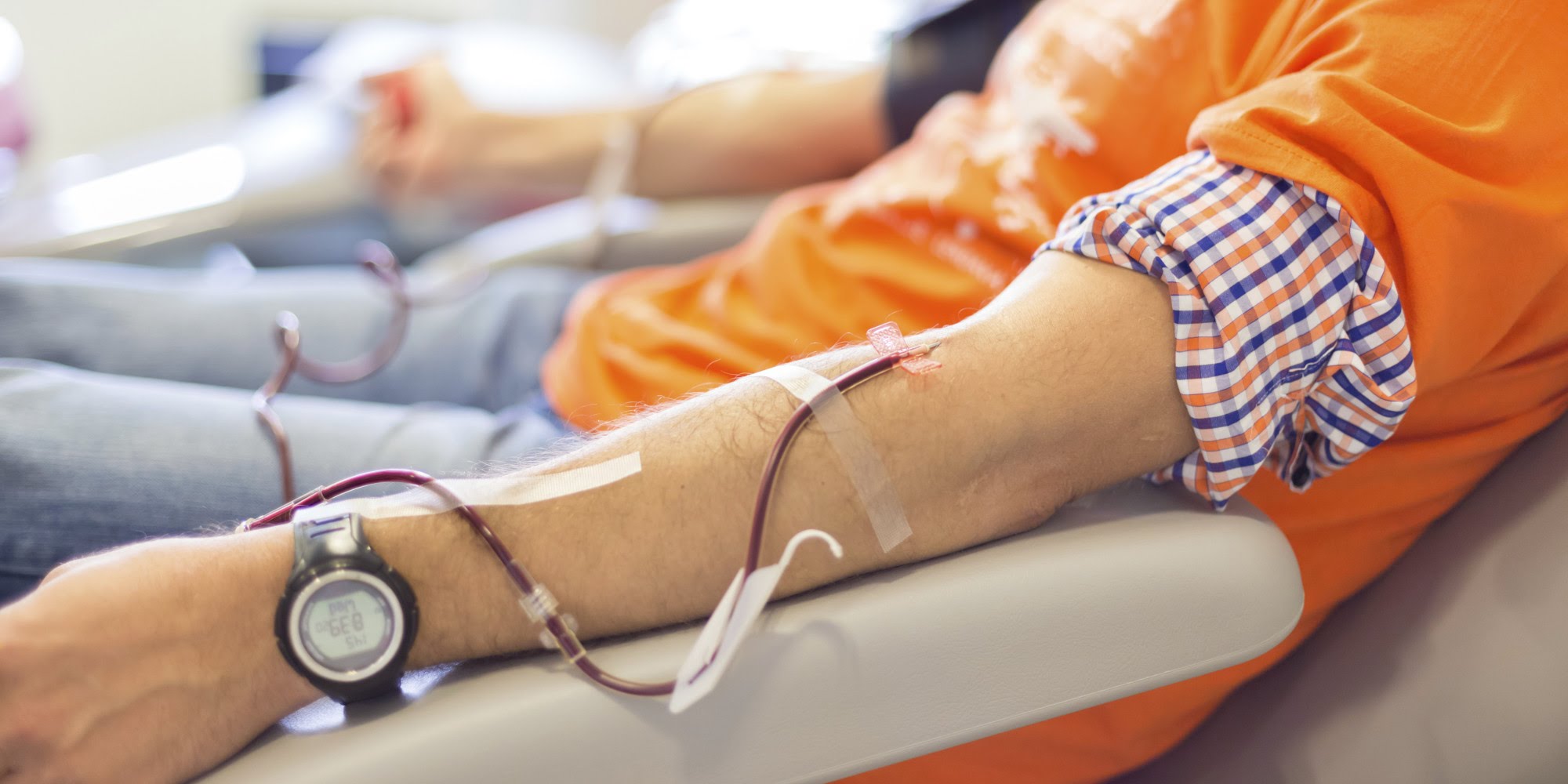Via America’s Lawyer:
Mike Papantonio discusses the role of pharmaceutical companies in creating the current opioid crisis in the U.S. and speaks with attorney Peter Mougey about the lawsuits being brought forward against these companies.
Transcript of the above video:
Papantonio: According to the data for the Centers of Disease Control, 91 Americans die every day from overdosing on opioids in the form of both prescription drugs and drugs like heroin, but now opioid painkillers are becoming one of America’s people killers. The opioid painkiller Oxycontin was approved by the FDA in 1995 and it made it’s way on to the market in 1996. That first year it pulled in 45 million in profit for Purdue Pharma. At the time, few people had ever heard of this drug company, but the company knew that their blockbuster painkiller was going to make them hugely wealthy. In just 15 years, their profits from Oxycontin had topped more than 3 billion a year. While Purdue was busy counting their cash, they completely tried to avoid counting the dead bodies that their product was leaving behind, but Oxycontin was just one of those several based opioid drugs on the market that were killing patients addicted and, ultimately, causing their deaths.
In no time at all, Purdue’s competition, they entered the market of painkiller and we soon saw pills being pushed by Pfizer and by Johnson & Johnson and by Teva and countless others. They became FDA approved addictive drug pushers almost overnight, so it’s no surprise that in the years since 1999 prescriptions for opioids have quadrupled in the United States and, not surprisingly, deaths from prescription painkillers have also quadrupled. Again, an average of 91 Americans die every day from an opiod overdose. It’s that spike in deaths that’s created a new wave of lawsuits against the drug companies that I just mentioned.
According to lawsuits that have been filed by the state of Kentucky, the city of Chicago, and a hand full of other counties across the country, these corporate drugs hustlers clearly knew about the addictive qualities of their drugs. They knew that overdoses and death were, overwhelmingly, common, but they did nothing, nothing at all to warn the public about what their own data was showing. The lawsuits show that as a result of the companies withholding information, the cost of hospitalization, ambulances, and all that treatment fell on the cities and the states. Taxpayers had to pay for that at the end of the day.
Lawsuits also show that these drug companies engage in consumer fraud, misrepresentation, false statements, false claims, false insurance fraud, and just a whole host of different types of unjust enrichment, but Big Pharma had other plans in dealing with their self-created opioid problem. Anytime there’s an ugly epidemic of death in the United States, even one created by Big Pharma, you can bet the drug company executives are working on a way to profit from it. That’s where the prescription painkiller story starts taking a really interesting turn. Recognizing that the corporate-driven drug abuse problem was getting out of hand, the drug Suboxone is created for the purpose to wean people off of painkillers. Suboxone combines an opioid painkiller with a drug that causes intense withdrawal effects. The idea is to break addiction because the body begins to associate painkillers with negative symptoms.
Indivior, the maker of Suboxone, is now the target of lawsuits brought by 35 state attorney generals for illegally blocking competitors from even entering the market. Not only did Big Pharma bring us the opioid epidemic, but they also created the cure and then tried to block cheaper, alternative drug therapies from even entering the market. Exactly the kind of conduct that we’ve learned to expect from the 21st century drug cartel.
Joining me now to help me explain the opioid crisis that we’ve currently experienced in the United States and to give us some insight into the growing litigation is Attorney Peter Mougey.
Peter, start by telling us how bad this problem with painkiller, this epidemic that we’re seeing, how bad is it?
Mougey: It’s hard to put into a few words, I mean it’s catastrophic. All you need to know at the end of the day is that opioid-based drugs are almost identical to heroin in the chemical makeup, number one. Number two, you need to know that more people have died from opiate overdoses and opiate use than all the Americans that died in Vietnam. Well, why is this happening? The reason why is because opiates were always used for end of life, like pain management, short-term, small, compact time periods where addiction really wasn’t the primary concern. What happened is, is that Big Pharma devised a marketing plan that was intricately laid out across the United States through a series of doctor visits, objective studies that downplayed or overrode or minimized the addictive nature.
Papantonio: Okay. Peter, let me ask you this.
Papantonio: The law suits that have been filed, what do we already know about the drug companies behavior in covering up the addictive nature of these pain pills? In other words, you had detailers, people who sold these drugs, they’d show up in a doctor’s office and say, “Gee, doc, you know you can use this for other things besides this serious type of procedure that you just performed. You can use it for virtually everything.” They were trying to expand their market, but what are the documents showing about what we’re seeing right now.
Mougey: The documents are showing is that Big Pharma knew, unequivocally knew about the addictive nature and the highly, highly dangerous nature of these drugs over the long-term and instead of relaying those risks, they downplayed the risk through targeted market ads. You mentioned the detailers, a scheme of marketing across the country, that they went out and pretty much said, “These drugs are safe to use for long-term.” Pap here’s what the key is. I don’t care if it’s a young man, woman in a high school or a college athletic event, it’s a veteran coming home, someone that has long-term chronic pains, dentists, even migraines, the doctors were prescribing based on the information given by Big Pharma, long-term pain treatment through these opiate-based drugs. It was never designed to be used long-term and, essentially, it tricks the brain into thinking, “I need the drugs. I need the drugs. I need the drugs,” and over time, you’ve got this tremendous epidemic across the country that we have 5% of the population in the US and over 80% of the opiate use.
Papantonio: Your solution is this, when you have the addiction, you also have all the illnesses related. You have death related. You have the hospital care related. You have the rehab related. You have all of these costs that the city of the state has to bear, so the people you’re representing actually are saying, “You know what, why doesn’t the drug company, have to pay for this? They knew exactly what they were doing. They made billions of dollars lying to everybody, lying to doctors, lying to regulators. Why don’t they have to pay for part of this?” Isn’t that the theory of your lawsuit?
Mougey: That’s exactly right. Essentially, Big Pharma’s created this mess. They’ve created the problem. They’ve laid out this drug that’s hit our high schools, our colleges, our vets, our business people, somebody that goes in for back pain and comes out 60, 90 days later addicted to opiates. If you’re going to reap the profit from those prescriptions and from that marketing push, you’ve got to pay to help clean it up. You’ve got to pay for the doctor’s visits. You’ve got to pay to get these folks off the drugs. You’ve got to clean up this mess and they have to stop prescribing it, they have to stop violating the marketing laws, and they need to clean up the mess. They can’t push it on to the cities, the states, the counties, the municipalities-
Papantonio: Ultimately, Peter, the taxpayers are having to pay for all this. Okay?
Mougey: There’s no doubt about it.
Papantonio: If you’re watching this show, you’re thinking, “Well, how does this affect me?” Well it affects you because the company made a billion, billions of dollars creating drug addicts across the United States. They knew they were creating drug addicts. Isn’t that part of the problem?
Mougey: It’s exactly the problem. At the end of the day, we can’t afford to pay our pensions, we can’t afford our essential services, our cities are underfunded in large part because of messes like this, where we’re spending hundreds of millions of dollars in cities across the country to pay for the mess that Big Pharma created and Big Pharma profited about. It’s time for them to clean it up. It’s as simple as that and that’s what these lawsuits are doing.
Papantonio: I’m, as you know, hugely critical of the FDA and the Justice Department for never doing their job. Did they do better here? Is there any sign that maybe they did better, at least in regard to creating drug addicts all over the United States?
Mougey: They have done. There have been huge fines levied against Big Pharma, but what it shows you at the end of the day is that fraud pays, misrepresentation pays. Hundreds of millions of dollars in fines hasn’t slowed these guys down. These fines started in ’06, ’07, and ’08 and what have you seen? You’ve seen marketing costs increase. You’ve seen opiate use increase. You’ve seen the problems increase. Yes, they did levy huge fines, but here at the end of the day, no one’s scared Pat. At the end of the day, nobody’s scared, fraud’s cheap. We pass along the fines to the shareholders and we continue this huge push across the country. At the end of the day, somebody’s got to be held accountable personally for this stuff to stop.
Papantonio: You know, here you have drug dealers who dressed up in Armani suits. They don’t look like the guy that’s on the street corner. They’re in Armani suits. They drive around in Mercedes-Benz and have Rolex watches. Don’t you have to throw some of those drug dealers in jail because they clearly knew what they were doing? Is that the solution here?
Mougey: It is the solution and I don’t care if you go from Wall Street to Big Pharma to corporate fraud, we see these repetitive problems over and over and over again because no one’s getting held accountable personally and getting put in jail. Think about it. This stuff’s heroin. At the end of the day, it’s heroin. It’s the same chemical compound as heroin and we’re pushing it on kids, on vets, on business people in the community that come in for chronic back pain. They leave addicted a couple months later, several months later and no one’s held accountable while Big Pharma lines their pockets with the profits they’ve made from mismarketing, misleading, and deceptive sales practices used in our cities and countries and hospitals around the country.
Papantonio: Peter I’ve got less than a minute left, but one thing I’m seeing as I follow this story is the most creative, the most aggressive, and most effective AGs around this country and the mayors even around this country, it’s those people who are fighting back and those are the people you’re working with I take it? About 20 seconds.
Mougey: That’s exactly right. That’s exactly right. We’re meeting with municipalities, with states, with cities around the country that are spending hundreds of millions of dollars a year cleaning up this mess that are going to recover or attempting to recover their cash out waste from Big Pharma.
Papantonio: Okay. Got to go. Thank you for joining us. Good luck out there, okay?





